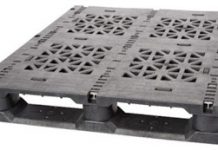by Scott Schnelle
As an energy consultant for home retrofits, I often have customers and acquaintances ask my opinion regarding green technologies and energy efficient products. Undoubtedly, with the recent surge of the green movement and a shift toward becoming more environmentally sustainable, now is a great time to invest in these types of products.
One product that has been getting more and more attention lately is spray foam. The product itself has been around for many years, but it has recently risen in popularity for a couple of reasons. Here, I’ll discuss spray foam briefly and then touch on some tips for investing in this market.
First, spray foam is a more environmentally efficient method of insulation as opposed to traditional fiberglass installation. Spray foam is usually several times more expensive, depending on the size of the spray foam tanks being used. Bigger tanks are cheaper per ounce. That being said, the spray foam installation is often quicker and easier, and after factoring in labor costs, spray foam can compete with fiberglass in many applications solely on price.
The product itself is a thick, foaming substance that sprays out in a thin layer but quickly begins expanding on contact. After about 60 seconds, it ceases expanding and begins to harden.
Otto Bayer developed the product in the 1930s while he was trying to develop an alternative to the rubber tire. It was also used in World War II in the German U-boats as floatation material. In the ‘60s and ‘70s, the product began infiltrating into the residential market as home insulation. In recent years, home improvement television shows have spurred a new interest in spray foam. Most customers that come to us cite these types of programs as their point of familiarity with the product.
My company highly recommends this product. It’s great for large gaps and cracks that need to be air-sealed. It also acts as a great insulator and can be used to save time in some applications like rim joists.
Because the product has been around for many years, I would not consider spray foam an “up-and-coming” product. However, I believe it is gaining quite a bit of popularity because of the green movement and the push for greater energy efficiency. I also believe that we’ll see a drop in the price of this product as more people use it and it is manufactured on a larger scale.
Currently, my company uses a spray foam product from Dow Chemical Company (DOW), though we do not necessarily endorse any one company or brand. All major industry players carry spray foam products, including Johns Manville (a subsidiary of Berkshire-Hathaway, BRK-A and BRK-B), Owens Corning (OC) and Certainteed (a subsidiary of Saint-Gobain (SGO.PA). Another company worth exploring is BioBased Technologies, LLC.
Biobased is based in Arkansas and specializes in polyurethane foam insulation products. The notable aspect about BioBased Technologies is that they use a soy-based product, which is becoming a new trend within the spray foam movement. Other soy-based insulation companies include InsulSoy, Emega Biopolymers, Urethane Soy Systems and Green Bear Innovation. Though, it is safe to say that BioBased is the industry leader in the soy-based product. I see soy-based spray foam growing in popularity faster than traditional spray foam.
Soy based foam could even become the industry standard in residential applications in the future, most likely because traditional spray foam products are are quite toxic. We have had a few cases where employees fail to use their masks properly and subsequently report pain in their lungs and a shortness of breath. It is extremely important to wear a protective body suit along with a breathing mask if ever applying spray foam. The soy-based product is much safer for the installer and the homeowner as well. The level of volatile organic compounds (VOCs) are much lower with the soy product, and I think as awareness about the harmful effects of VOCs becomes more widespread, more people will be seeking a safer product. Our company is currently working with distributors in the area that carry soy-based spray foam.
Though Johns Manville has a line of spray foam products, they have yet to introduce a soy-based product. The same is true for Owens Corning and Certainteed. I believe that this is because soy-based spray foam is still relatively new. Soy-based spray foam has many advocates, but it also has been the subject of some criticism. For instance, many believe that the environmental benefits are overstated, as soy-based spray foam could open up its own set of environmental problems including pesticide use and the use of genetically-modified crops. However, many agree that these potential problems still outweigh the carbon footprint and toxins associated with traditional spray foam.
About the Author: Scott Schnelle is an energy auditor with Energy Link, a home retrofit company based out of Columbia, Missouri. EnergyLink specializes in increasing energy efficiency in homes through comfort sealing, duct renovations, insulation, heating and air and more.
Editor’s Note (4/9/12):
I was contacted by a representative of BioBased Technologies (a company highlighted in the article) who felt that it was misleading regarding the safety of their product. Here is what she had to say:
[Scott Schelle] mentions spray foam insulations that incorporate soy, and we are one of the manufacturers of these products. The main environmental benefit is that our products seal and insulate a structure so that it uses less energy for heating and cooling, but several of our products also replace a portion of the petroleum polyols with bio-based polyols (in our case soy). We’ve been able to do this and still produce an insulation product that works. But it is still a spray foam insulation. That means it is still a two-component system, one part, the A side, is the same as traditional spray foam insulations. There are still worker safety measures that must be followed during and after installation, and occupants or other workers cannot be in the structure when the product is installed. These safety measures are the same for all spray foam insulation products, regardless of whether or not they incorporate bio-based content. Those are detailed at www.spraypolyurethane.org.
The bio-content in any product allows us to incorporate a rapidly renewable-based polyol for a portion of the petroleum-based polyols. This article makes it sound as if the bio-content impacts these safety measures, and it does not. We want everyone to understand that any spray foam insulation product has specific safety guidelines that must be followed.
Jennifer Wilson
Brand Manager | BioBased Technologies®








